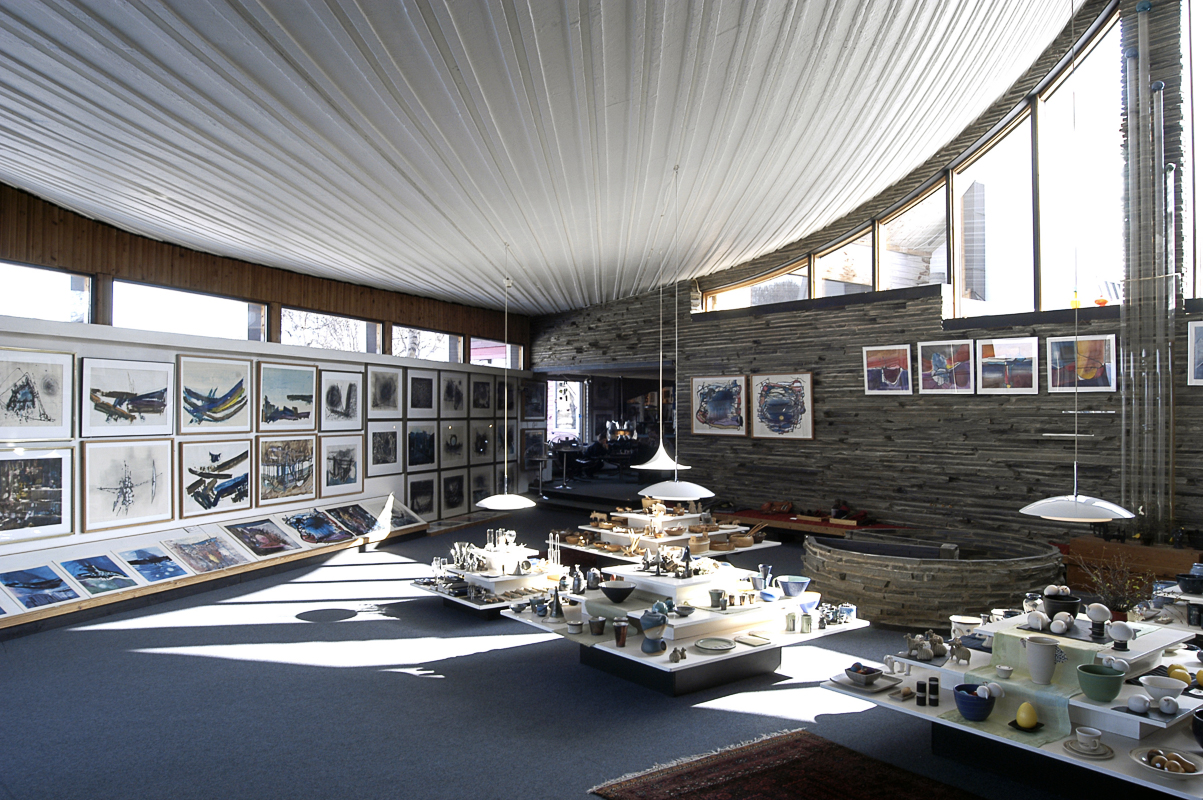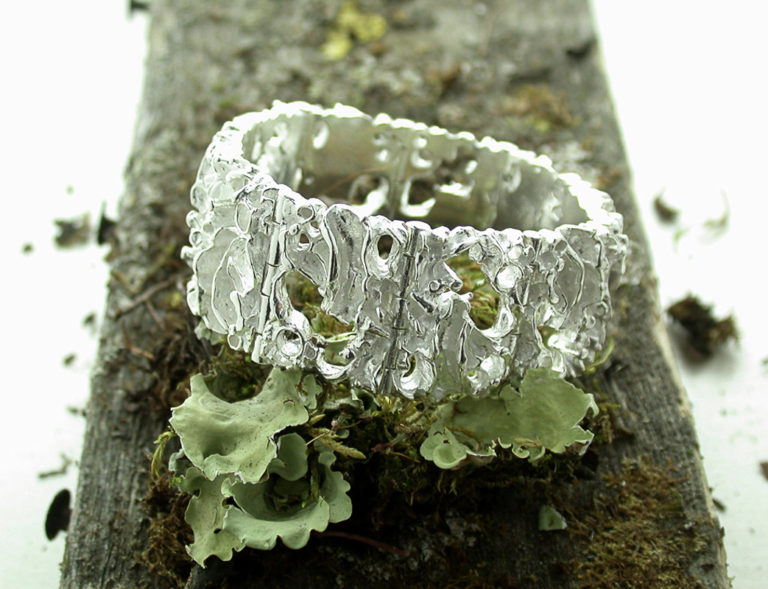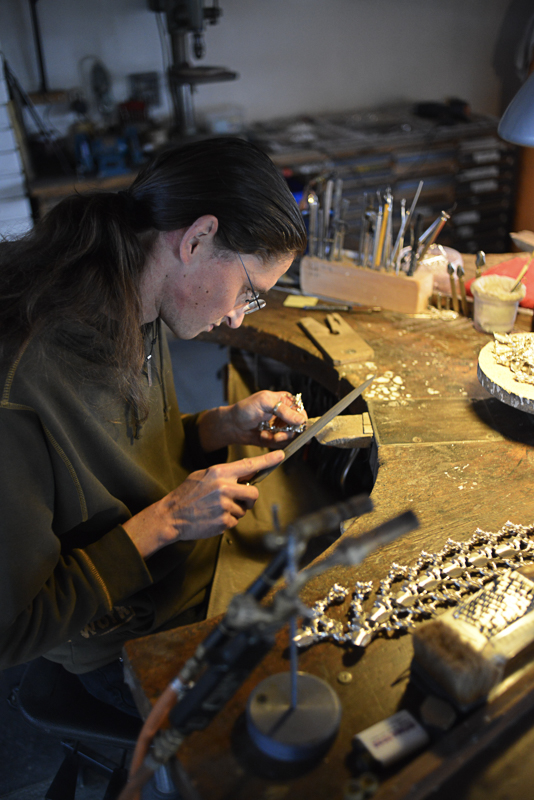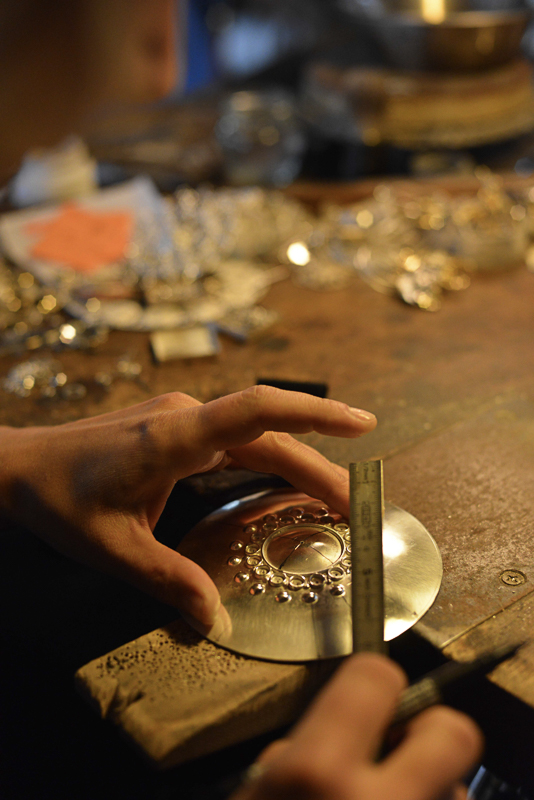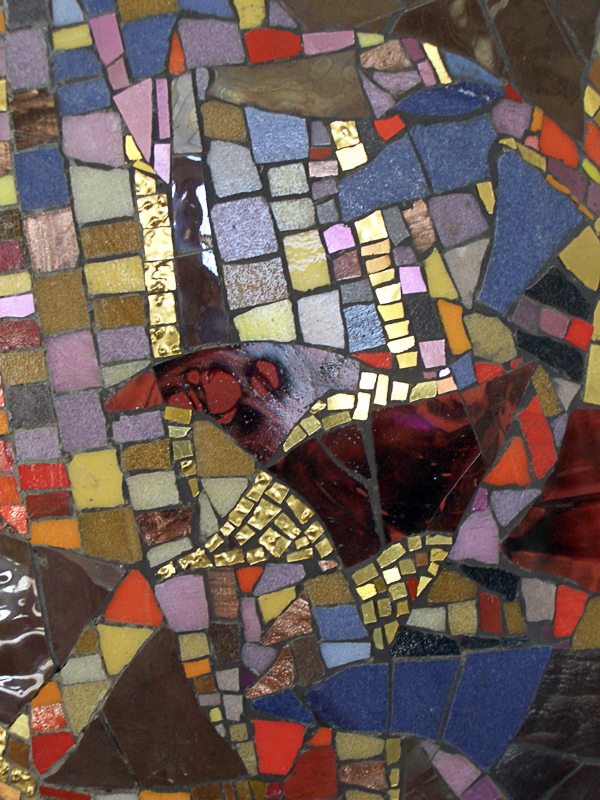An unobtrusive building with sweeping lines is a jewel box of traditional Sami silver and modern silver design. This is the life’s work of Frank and Regine Juhls.
Founded by adventurers
In the 1950s, Kautokeino was an isolated community with no roads, where the Sami people still lived their traditional way of life. A young Danish adventurer, Frank Juhls, was working here as a handyman, while a young German girl, Regine, had taken a job as a maid with a reindeer herding family. The adventurers found each other and became part of this unique community.
Sami silver
Frank Juhls began to take on work repairing Sami silver jewellery, none of which had been made by the Sami; it had found its way north through trade. Sun wheels from Siberia, silver spoons and Catholic crosses, filigree brooches from Bergen — an assortment of items from different traditions, now united in eclectic beauty on traditional costumes, bringing new meaning to the items.
Silver with a new meaning
Since nomads are always on the move, they do not have silversmiths. However, nomads find silver a good way of saving wealth and capital. It is easy to carry, and you can use it to display your wealth. Since nomads don’t build fine, richly decorated houses, it is silver that they use to demonstrate their prosperity.
Boom time for Sami Silver
Despite being major consumers of silver jewellery, the Sami made none of it themselves. Now that they had a silversmith in the area, they could have jewellery made to order — things like an extra row of pearls around a brooch, or bigger, more visible hooks on a man’s costume. Since the 1950s, developments in Sami silver have been exciting. Women’s brooches have become bigger and more colourful, and the hooks and buttons on men’s costumes have become more ornate.
The modern silversmith’s craft
Regine Juhls also learnt the silversmith’s craft, although for her, silver was a means of artistic expression and her Tundra series is regarded as a modern classic. Her jewellery features light, fragile, organic and imaginative lines, inspired by the vegetation and light of the tundra. Her daughter Sunniva Juhls, who now runs the gallery, also has her own modern, expressive collection. Round earrings, deceptively simple brooches and rings in strong, simple shapes take their inspiration from the landscape of the Finnmark plain.
Developing architecture
The building on the hill above Kautokeino is one of the most unique cultural buildings in Northern Norway, though when it started off, it was only a simple wooden house, built from planks floated over the Kautokeino river and carried up the hillside. The next section, built in the 1960s, has a roof that follows the line of a snowdrift beside the house, and the Juhls have then added a new room every ten years.
A building full of suprises
The building is full of surprises, such as the little hen and sheep barn, separated from the exhibition only by a glass wall. One room is devoted to the Juhls couple’s travels in Afghanistan, before the Soviet invasion in 1979, where they found a nomad culture that bore many similarities to the Sami culture. A small wing is also a museum for old objects that were discarded in the fifties and sixties, when plastic and steel came into vogue. It contains costumes, cheese-making moulds and bone spoons — old items that no one needed any more. The silversmith also works in the building.
A constant development
The building is constantly developing. In the biggest room, Regine is now turning the end wall into an impressive mosaic of glass, tiles and other objects. The perspective is the future. Frank’s imprint will be in the form of a thumb, clad in mosaic glass. This means that the building is a place always worth returning to, as there will always be something new to see.

Visit the silver gallery
Go further for more information regarding the silver gallery
